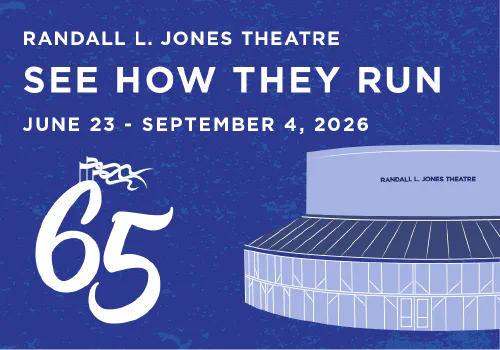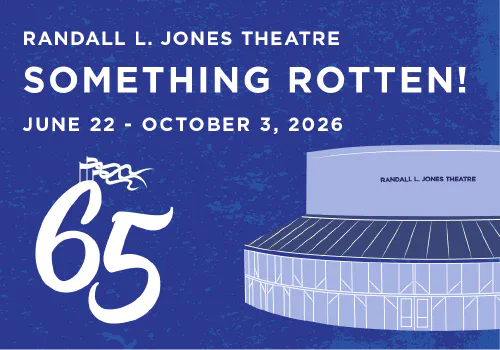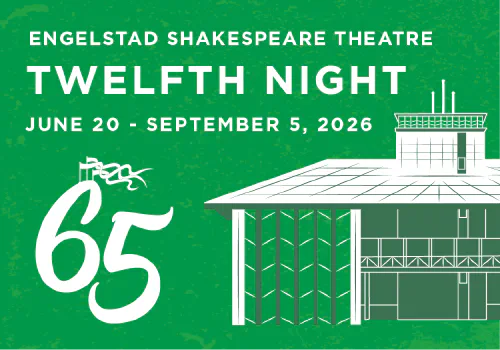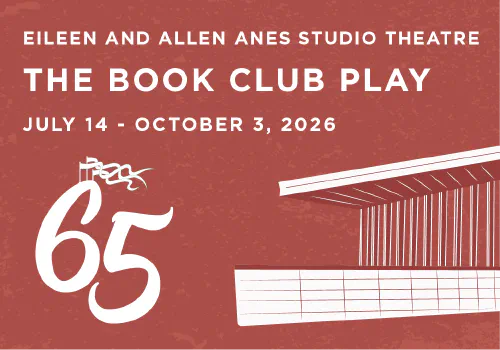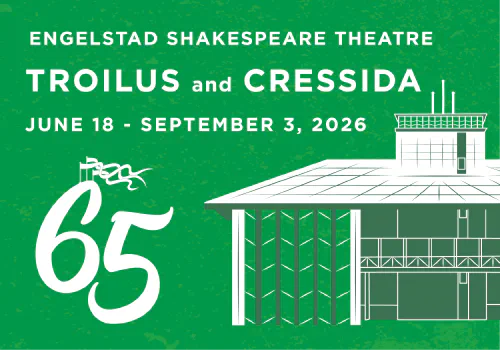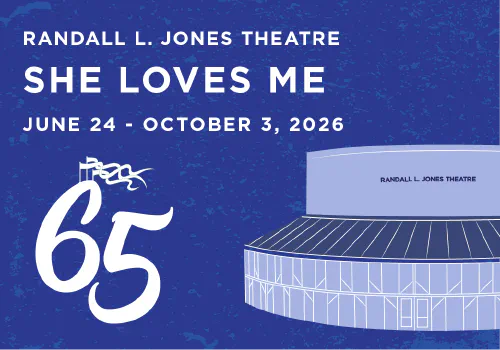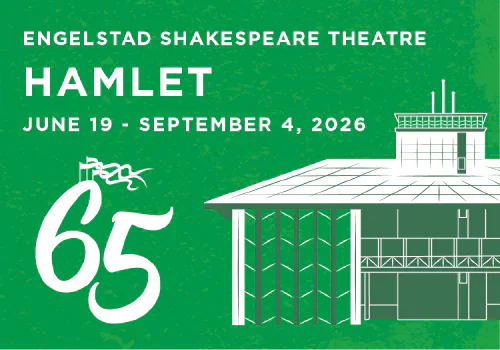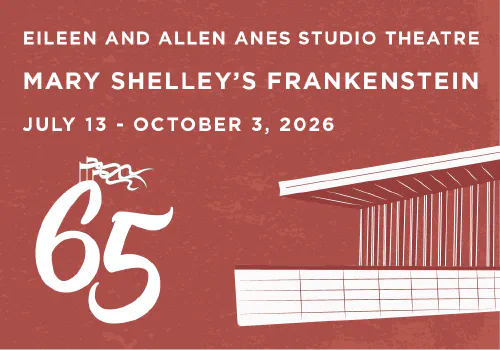By Kelli Allred, PhD
The Reduced Shakespeare Company (RSC), whose gifted playwrights penned The Complete Works of William Shakespeare (abridged), have struck our collective funny bone again with a comedy that promises to challenge the wits of the best actors and the most devoted audiences Cedar City has ever seen.
When archeologists unearthed the bones of King Richard III from beneath a parking lot in Leicester, England in 2012, the event triggered the imaginations of Reed Martin and Austin Tichenor of the RSC. The pair immediately determined to use this new-found treasure as fodder for an imaginary play that might have been buried alongside the king and unearthed at the same time.
The playwrights’ outlandish assertions balloon as the twenty-first century duo claim that the new-found script was written by none other than the Bard himself. The actors have the audacity to gaze into the audience and attest that the script they are about to see—found buried with the bones of King Richard III—is Shakespeare’s first ever attempt at writing a play, which accounts for the appearance of so many familiar characters.
When the lights come up on William Shakespeare’s Long Lost First Play, audiences will immediately recognize the opening lines of Twelfth Night and Henry V combined: “O, if a muse of fire be the food of love, let’s eat!” The rest of the play is comprised of plotlines, settings, characters, and dialog from all of Shakespeare’s plays.
Using the Elizabethan tradition of men playing the female roles, a company of three male actors play all the characters—a Herculean feat. The stagehands act out an assortment of set pieces and props. (Yes, it’s hard to imagine, which is why you need to see the play!)
Actor 1: “We can’t do this by ourselves!”
Actor 2: “Of course, we can.”
Actor 1: “No, we can’t. Look at the cast list. There’s 1,639 characters in here!”
Actor 3: “The three of us can do that.”
Actor 2: “Easily. Besides I’ve made some cuts. . . . This thing is over 100 hours long.”
Rest assured that the play should run just under two hours with one intermission.
Playwrights Martin and Tichenor have found a recipe for comedic success that includes liberal use of literary devices: irony, visual incongruity, verbal doublespeak, alliteration, allusion, fallacy, hyperbole, verbal irony, sarcasm, double entendre, euphemism, metaphor, and more. If you need to look these up, do it now (www.literarydevices.com); there’s a quiz coming up!
The liberal use of literary devices guarantees the viewer/reader a sense of satisfaction: Ah, I got that! This intellectual gratification is precisely what language arts/literature teachers have been striving to instill in students for eons. Catching the allusions (Oh, I know what that line comes from!); spotting the anachronisms (Hey, wait. Those didn’t exist in Shakespeare’s time!);understanding the meanings behind the myriad malapropisms (Haha, he said that but meant to say this) are “the stuff [geniuses] are made of!” One critic said that “a lighter-than-normal dose of 16th century English and a generous mix of contemporary and local allusions take the edge off, making this production a sweeter deal for more diverse audiences” (Derek Schwabe, Maryland Theatre Guide, May 2016).
Who Wrote Shakespeare’s Long Lost First Play?
The Reduced Shakespeare Company came into their own in the 1980s after writing and performing the award-winning The Complete Works of William Shakespeare (abridged), which has been entertaining audiences from Broadway and London theatres to local and school plays. By setting the bar high, the playwrights push the limits of performing with “blind enthusiasm and boundless energy” and acting “genuinely surprised” and responding “honestly” to one another and to each new audience. The Notes to the actors suggest that they “keep the show fresh and timely by updating the many topical references,” and they caution the actors to “come up with your very own put-downs of annoying famous people where required” (The Complete Works of William Shakespeare [abridged], 1987.)
The RSC—also the acronym for the Royal Shakespeare Company in London—has created a theatrical dynasty of “abridged” and “reduced” works: The Bible: The Complete Word of God (abridged); All the Great Books (abridged); The Complete History of Comedy (abridged); The Complete History of America (abridged); and several others.
Can You Count the Plays?
The first half of William Shakespeare’s Long Lost First Play ends when all 1,639 of his characters wash ashore on a wooded island, thanks to a tempest. The actors return from intermission and provide the audience with a re-cap of the first half of the production:
“Among those now lost in this forest are a merchant from Venice, a Danish prince picked up from an English vessel, the entire court of the King of Naples, seventeen different pairs of twins, and an Egyptian queen. You should see the asp on her! . . . We should also mention that King Lear has found his three daughters, a woman has disguised herself as a statue, Richard Duke of Gloucester has been crowned King Richard the Third, and the little wooden puppet Petruchio has been swallowed by a giant whale. . . . A soldier named Titus Andronicus is surviving in the woods by eating pies made out of his enemies, a young poet named Orlando is designing theme parks. . . . A woman named Rosalind has disguised herself as a boy, while her friend Celia has disguised herself as a slightly different girl. Falstaff is still on the run with Dromio’s gold; Dromio is still on the run from Juliet; and skulking and scheming in the woods is the evil bitter Puritan lieutenant named Malvoliago.”
Here is your assignment. Reread the paragraph above and find examples of the following literary devices:
- Verbal doublespeak
- Hyperbole
- Malapropism
- Euphemism
- Visual incongruity
- Anachronism
One of the actors reveals that the play will take 400 minutes to perform, but another assures the audience that he has made cuts and will keep the audience informed about what has been cut; nevertheless, these two hours of theatrical whimsy will be chock full of comedic antics dating back to ancient Greek comedy. Keep an eye out for
• Ad lib and improvisation
• References to current events
• Quick-change artists
• Versatility
• Lightening-speed tempo
• Breaking character and the fourth wall
• Mocking the audience, the theatre, or the city
• Props run by a team of stage hands
• Puppets and masks used by zany actors
• Sparse use of sets, lights and sound
Physical comedy punctuates the play’s witty and imaginative dialogue. For example, the three witches from Macbeth become King Lear’s three daughters, chanting a mish-mash of their original witchy lines mingled with modern cultural references. How many different references can you find in this verse spoken by the witches/daughters?
“We’ve hurt daddy’s feelings. What shall we Do?
Witch, please. We’ll do whatever we have to.
Dogs that bark and cats that mew
We’ll get Lady Macbeth and Hamlet too
Expecto Patronum and Allakazoo
We’ll get her, my pretties –
And her little dog too!
Put ‘em together and whaddaya got?
Bippity-boppity boo!”
And, now, part two of your assignment:
- Which line is chanted like a rap?
- Which line is taken from Macbeth?
- Where does J. K. Rowling fit into this dialogue?
- Which terms come from a Disney film?
- Where do you hear the Wicked Witch of the West?
This is Shakespeare that even a disinterested teenager will be hard pressed to sleep through; moreover, this is a play that even the most reluctant reader may find to be an enjoyable, albeit challenging, read! Students of Shakespeare will be clambering for a copy of William Shakespeare’s Long Lost First Play (abridged) to use in acting classes, competitions, and auditions.
Answers
- “You should see the asp on her”
- Different pairs of twins
- Malvoliago: combination of two antagonists, Malvolio and Iago
- Eating enemies vs cannibalism
- Petruchio . . . whale
- Orlando designing theme parks
- “Witch, please”
- “Dogs . . . mew”
- “Expecto Patronum”
- “Allakazoo, Put ‘em . . . boo!”
- “We’ll get her . . . dog too!”



